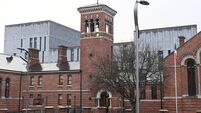Miners trapped as earthquake death toll rises
Rescuers rushed to reach 24 coal miners trapped underground by China’s earthquake almost two weeks ago, officials said today as the government sharply raised the death toll and warned it could exceed 80,000.
It was not known if the miners were alive, but authorities were hoping for the best until they learned otherwise, said Wang Dexue, the deputy chief of the government’s work safety department.














